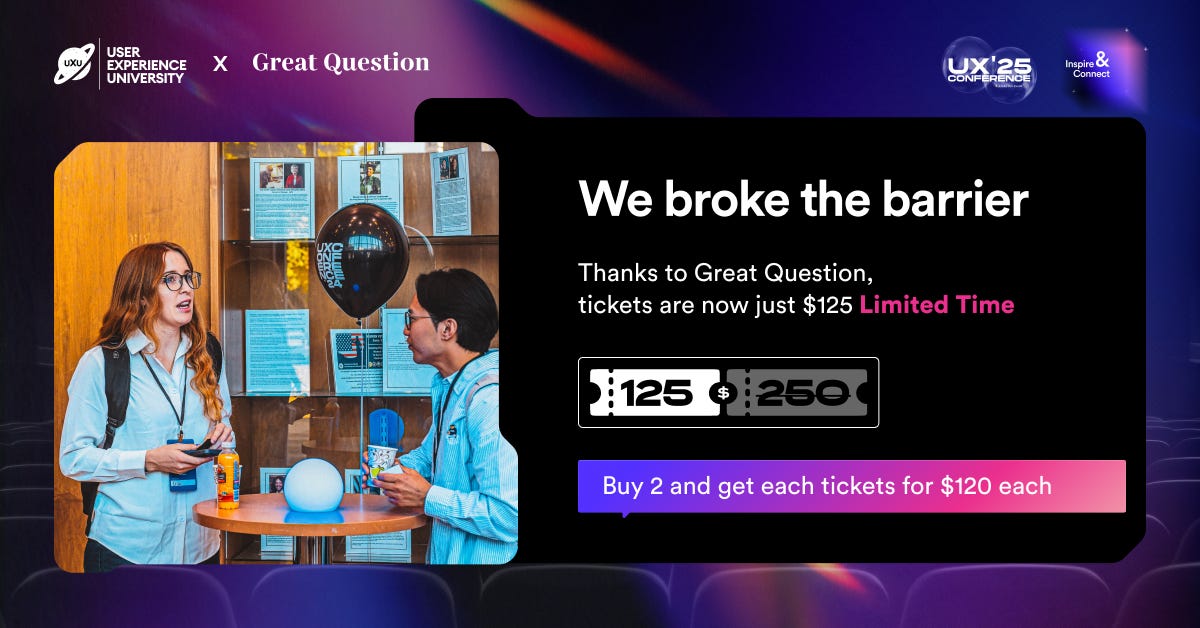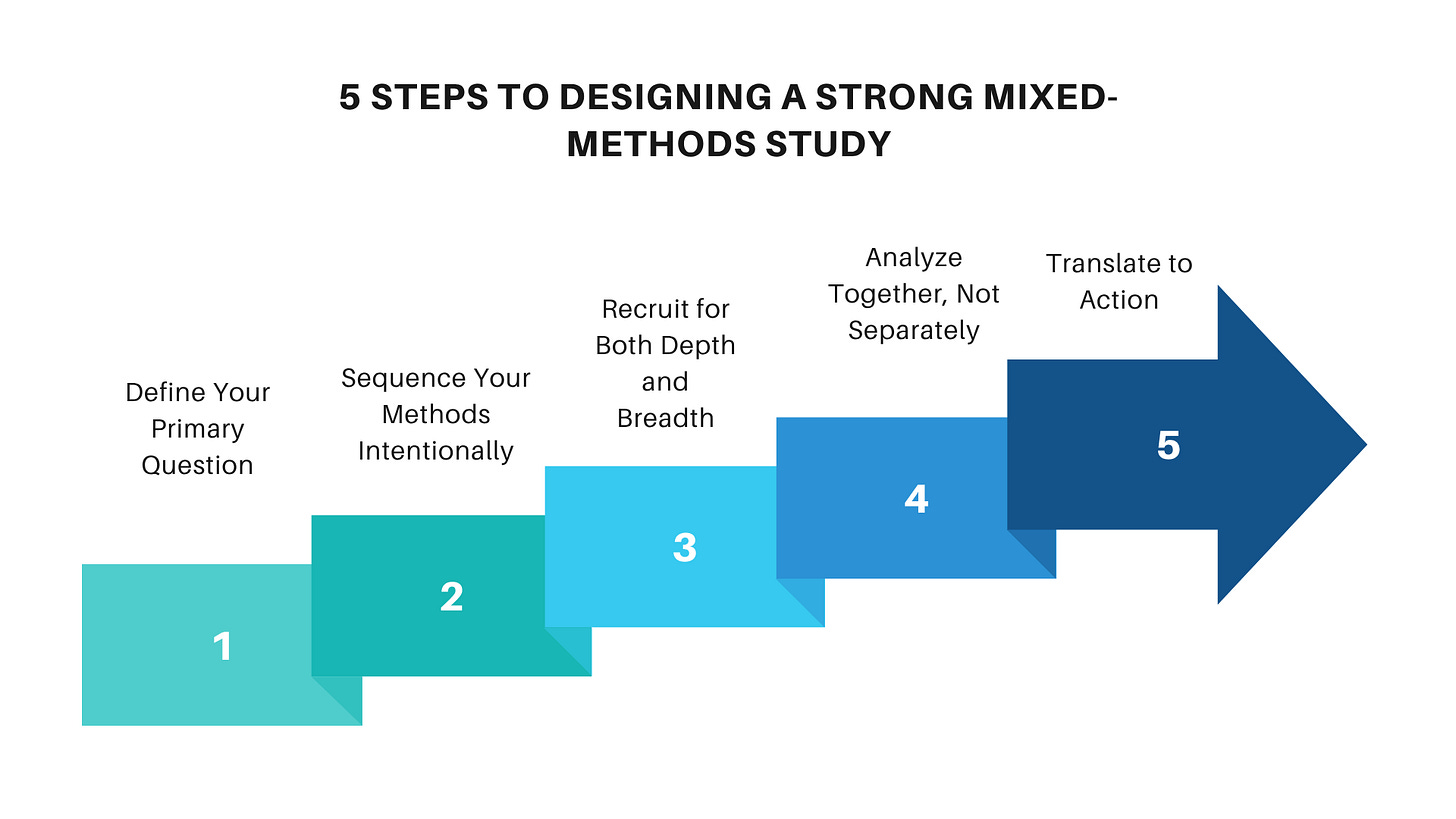The Power of Mixed-Methods UX Research
Why relying on just “what” or “why” will hold you back in 2025
If you only run usability tests, you’ll know why users struggle... but not how often it happens.
If you only analyze analytics, you’ll know what is happening... but not why.
Mixed-methods research bridges that gap.
It combines qualitative insights with quantitative validation — so you can connect the dots between human behavior and measurable impact.
This isn’t just “do both and hope for the best.”
It’s about timing, integration, and knowing which method leads when.
Why Single-Method Research Leads to Half the Story
When to Start with Qual, When to Start with Quant
UXCON25 Spotlight: Turning Insights into Business Cases
5 Steps to Designing a Strong Mixed-Methods Study
Real-World Scenarios That Show It Works
Pitfalls That Kill Mixed-Methods Projects
Resource Corner
Why Single-Method Research Leads to Half the Story
Teams often lean too heavily on their comfort zone:
Quant people default to dashboards. Qual folks default to interviews.
The problem?
Quant tells you the scale... but not the reason.
Qual tells you the reason... but not the scale.
Without both, you can’t prioritize effectively or persuade stakeholders with both human stories and hard numbers.
When to Start with Qual, When to Start with Quant
Start with Qual when:
You’re exploring a new problem space
You need to generate hypotheses
The “why” is still unclear
Start with Quant when:
You’re validating an existing hypothesis
You need to measure impact
You’re identifying patterns at scale
Example:
A spike in drop-offs at checkout (Quant) → Follow-up interviews to learn why users abandon (Qual).
Or…
Users complain about a “confusing” dashboard (Qual) → Task completion time study to see how often it slows them down (Quant).
UXCON25 Spotlight
Data wins arguments. Stories win hearts
At UXCON25, we’ll show how top researchers combine qual + quant to win stakeholder buy-in, building narratives that start with empathy and end with ROI, and blending analytics with ethnography into one seamless story.
Thanks to Great Question’s sponsorship, tickets are already down to $150, lower than last year, lower than ever.
But for today only, you can go even further:
🎟️ $125 tickets.. flash offer ends TONIGHT at midnight.
back to where we stopped…
5 Steps to Designing a Strong Mixed-Methods Study
Define Your Primary Question
Be clear on what you want to learn. “Why are users abandoning?” is different from “How many users are abandoning?”Sequence Your Methods Intentionally
Decide which method leads based on the problem, not habit.Recruit for Both Depth and Breadth
Interviews for rich insights, surveys for representative data.Analyze Together, Not Separately
Look for patterns where numbers and narratives align or contradict.Translate to Action
Present findings as a story that moves from human experience to measurable business impact.
Scenarios That Show It Works
E-commerce Checkout Optimization
Quant: 40% cart abandonment rate.
Qual: Users hesitate due to unclear shipping costs.
Action: Make shipping costs transparent earlier → +15% conversions.SaaS Feature Adoption
Quant: Only 12% of users use new feature.
Qual: Users don’t know it exists.
Action: In-app onboarding → 3x usage in 6 weeks.
Pitfalls That Kill Mixed-Methods Projects
Running both methods in silos with no integration
Letting data confirmation bias override contradictory insights
Overcomplicating analysis so findings aren’t actionable
Not presenting results in a way that stakeholders understand
📚 Resource Corner
Final Thought
The best insights happen when empathy meets evidence.
When you can show a video clip of a frustrated user and a chart proving it affects 30% of your customers... your work becomes undeniable.
Mixed-methods isn’t just a “best practice” it’s the bridge between curiosity and credibility.





